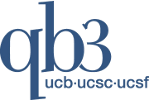Estimation of apparent rAB affinity by ELISA-based determination of EC50 and IC50
1.0 Introduction
Following expression and purification of soluble recombinant antibodies fragments (rABs), ELISA-based assays may be useful to verify reagent binding to target antigen. In general, two related methods are used to estimate rAB affinity but can also provide an indication of the optimal antibody concentration to be used in other applications and the specificity via direct comparison of binding to non-specific control proteins.
EC50 or the concentration of antibody that gives half-maximal binding is determined by direct and saturable binding of a rAB dilution series to both target antigen and a non-specific control protein. An estimate of affinity is interpreted from one-half the concentration at which rAB binding first achieves saturation. The assay can be done in a high-throughput manner using 3-5 fold dilutions of rAB of a stock antibody concentration in binding buffer. Since most antibodies will, at sufficiently high concentrations, begin to bind non-specifically to non-target proteins, this assay will enable determination of a [rAB] that provides maximal specific to non-specific signals when conducted using the appropriate non-specific control. EC50 measurement allows for rank ordering of many unique clones, but may not provide an accurate measure of affinity. It does however, allow for determination of a sub-saturating concentration of rAB that can provide for more accurate determination of rAB affinity in competitive ELISA.
A similar, yet more accurate determination of rAB affinity can be obtained through direct binding of rAB to immobilized target protein in the presence of series of concentrations of soluble target antigen in a competitive ELISA format. The quantitation of rAB EC50 is required to establish an accurate sub-saturating concentration of rAB for conducting the competitive binding experiment. The multipoint competitive ELISA then evaluates binding of the sub-saturating rAB concentration to immobilized antigen competed by pre-incubation with serial dilutions of antigen in solution to produce an inhibition curve from which the IC50 value can be determined.
2.0 Overview Steps
- 2.1 rAB expressed and purified according to provided protocols
- 2.2 rAB is serially diluted in buffer for use in binding assays
- 2.3 Following incubation with immobilized target and non-specific control proteins, binding of serially-diluted rAB to target is assessed using anti-Fab-HRP antibody which gives a A450 nm signal with TMB after reaction quenching
- 2.4 The rAB dilution that gives half-maximal binding is identified for subsequent use in competition experiments
- 2.5 The concentration of rAB that gives half-maximal binding is incubated with a range of concentrations of soluble antigen (typically 1 - 150 nM in multi-point, though single point competition can also be used to estimate affinity)
- 2.6 rAB in the presence and absence of soluble antigen is transferred to separate wells of a microplate to determine the percent inhibition elicited by known soluble antigen concentrations and to estimate affinity.
Validation Criteria
We generally employ a 50 nM cut-off (IC50 as determined by multi-point competitive ELISA) in the evaluation of rABs to determine which of them will be further validated by immunoprecipitation and specificity testing.
3.0 Materials
Glass/plasticware
- Maxisorp 384 Immunosorp plates (Thermo, 12-565-347)
- Non-binding surface assay plates (Corning, 3641)
Reagents
- Anti-FLAG M2-HRP conjugate (Sigma, A8592)
- TMB Peroxidase substrate (KPL, 50-76-00)
Solutions
- Blocking buffer: 1X PBS pH 7.4 + 0.2% BSA
- PBT Binding Buffer: 1X PBS + 0.2% BSA + 0.05% Tween
- PT Wash Buffer: 1X PBS + 0.05% Tween
5.0 EC50 determined by direct-binding ELISA
- 5.1 Immobilize antigen in a sufficient number of wells in a 384 well plate to generate a multi-point rAB dilution curve by incubating 30 μL of a 2 mg/mL solution in 1X PBS pH 7.4 overnight (O/N) with shaking at 4oC.
- 5.2 Include an equivalent number of well coated with a non-specific control protein such as BSA, neutravidin, GST, or other appropriate control prepared in identical fashion.
- 5.3 Following immobilization, block plates by incubating with an excess of blocking buffer (1X PBS, 0.2% BSA) with shaking at room temperature (RT) for 1 hr.
- 5.4 Prepare a sufficient volume of a five-fold dilution series of purified rAB in PBT in a non-binding plate (generally 100 μL will be sufficient for each concentration of rAB) to test binding against both target and non-specific protein in a 384 well plate ranging from 1 to 150 nM.
- 5.5 Wash the antigen-coated plate 4X with PT buffer either by hand or using an automated plate washer. Remove excess buffer after wash complete by tapping the plate on paper towels.
- 5.6 Transfer 30 μL of diluted rAB to the antigen–coated plate and an equivalent number of non-specific control protein-coated plates and incubate for 1hr with shaking at 200 rpm at RT.
- 5.7 Wash eight times with PT buffer (This can be done with a plate washer using a slow dispense) and remove excess buffer after wash complete by tapping the plate on paper towels.
- 5.8 Add 30 μL of anti-FLAG M2 antibody fused to horseradish peroxidase (diluted 1:5000 in PBT buffer) to all wells including antigen and control protein-coated. Incubate 30 min with gentle shaking.
- 5.9 Wash six times with PT buffer and two times with PBS. Remove excess buffer after wash complete by tapping the plate on paper towels.
- 5.10 Add 30 μL of freshly prepared TMB substrate. Allow color to develop for 5–10 min or until blue colour develops.
- 5.11 Stop the reaction with 30 μL of 1.0 M H3PO4 and read spectrophotometrically at 450 nm in a microtiter plate reader.
- 5.12 The EC50 is estimated by determining concentration of rAB that exhibits roughly one-half maximal absorbance from the point at which the rAB displays saturation behavior. This can be done via curve fitting using fitting software such as SigmaPlot, GraphPad or Prism or by inspection to determine the OD at which saturation occurs, dividing by 2 and interpolating the concentration of rAB that results in this absorbance.
6.0 IC50 determined by multipoint competitive ELISA
- 6.1 Immobilize antigen in a sufficient number of wells in a 384 well plate to generate a multi-point rAB dilution curve by incubating 30 μL of a 2 mg/mL solution in 1X PBS pH 7.4 overnight (O/N) with shaking at 4oC.
- 6.2 Following immobilization, block plates by incubating with an excess of blocking buffer (1X PBS, 0.2% BSA) with shaking at room temperature (RT) for 1 hr.
- 6.3 While blocking, prepare a mixture of purified rAB at the EC50 in PBT with a range of [antigen] (typically from 0 – 150 nM) in non-binding plates as is described in Table 1.
- 6.4 Transfer 30 μL each rAB-antigen mixture in to separate wells of an antigen–coated plate and incubate for 30 min with shaking at 200 rpm at RT.
- 6.5 Wash eight times with PT buffer and remove excess buffer by tapping plates on paper towels.
- 6.6 Add 30 μL of anti-FLAG M2 antibody fused to horseradish peroxidase (diluted 1:5000 in PBT buffer). Incubate 30 min with gentle shaking.
- 6.7 Wash six times with PT buffer and two times with PBS and remove excess buffer by tapping plates on paper towels.
- 6.8 Add 30 μL of freshly prepared TMB substrate. Allow color to develop for 5–10 min or until blue colour develops.
- 6.9 Stop the reaction with 30 μL of 1.0 M H3PO4 and read spectrophotometrically at 450 nm in a microtiter plate reader.
- 6.10 The IC50 is estimated by determining concentration of antigen that results in roughly one-half maximal binding when compared to rAB binding in the absence of antigen. This can be done via curve fitting using fitting software such as SigmaPlot, GraphPad or Prism or by inspection to determine the OD at which saturation occurs, dividing the maximal OD by 2 and interpolating the concentration of antigen that results in this absorbance.
| rAB-[Ag] 1 | rAB-[Ag] 2 | rAB-[Ag] 3 | rAB-[Ag] 4 | rAB-[Ag] 5 | rAB-[Ag] 6 | rAB-[Ag] 7 | rAB-[Ag] 7 |
[rAB] | EC50 | EC50 | EC50 | EC50 | EC50 | EC50 | EC50 | EC50 |
Antigen (nM) | 0 nM | 2.4 | 4.7 | 9.4 | 18.8 | 37.5 nM | 75 nM | 150 nM |
Please send corrections, modifications and suggestions to smiersch@recombinant-antibodies.org



